During night I realize I cannot sleep more than 5 hours. Even if I sleep early and want to have extra sleep, I could not. Auto wakeup after 5 hours. And I got 20 minutes nap before lunch
4 Alternative Sleep Cycles That Can Add Extra Hours to Your Week
Monophasic sleep seems to be the most popular type of sleep. But there are actually a few more ways you could distribute your rest time and make it fit your schedule and your body clock. For example, a siesta is very common in some countries, like Spain and Mexico. And that kind of sleep schedule is biphasic, because there are 2 sleep periods — a long one at night and a short one during the day.
We at Bright Side got curious about ways to make more time in the day by adjusting our sleep schedule. At the end of the article, we’ll also share a trick that might help you fall asleep faster!
1. Biphasic cycle
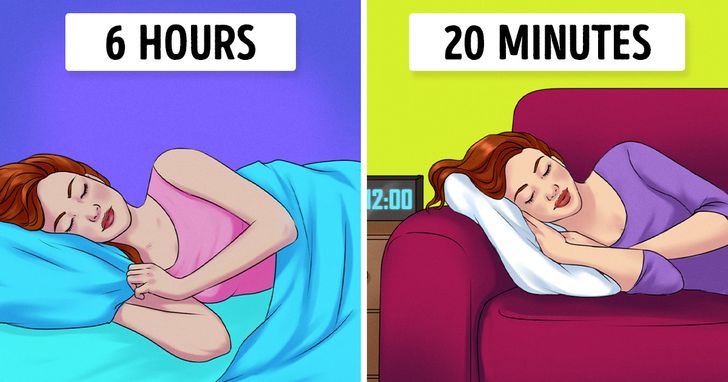
Biphasic sleep is the easiest sleep cycle to adapt to. In total, you will get from 6 to 6.5 hours of sleep per day, distributed between 2 periods. One option is to have a 6-hour sleep during the night and a 20-minute nap in the middle of the day. Another option would be to sleep only 5 hours during the night, but to take a longer nap later, from 1 to 1.5 hours.
There are many benefits to adapting to this sleep cycle. It’s pretty common to feel drowsy midday, and biphasic sleep allows you to take a nap somewhere around that time. Taking naps, in turn, can improve your memory, lift your mood, relieve stress, make you feel more alert, and it’s also good for your heart. In general, this sleep schedule creates more free time in the day for you to be productive.
However, the research is mixed as to the pros and cons of this sleep cycle. Moreover, the need to take a nap during the day could also be a sign of a sleep disorder. So before changing your sleep habits, it’s important to consult with a doctor.
2. Uberman cycle
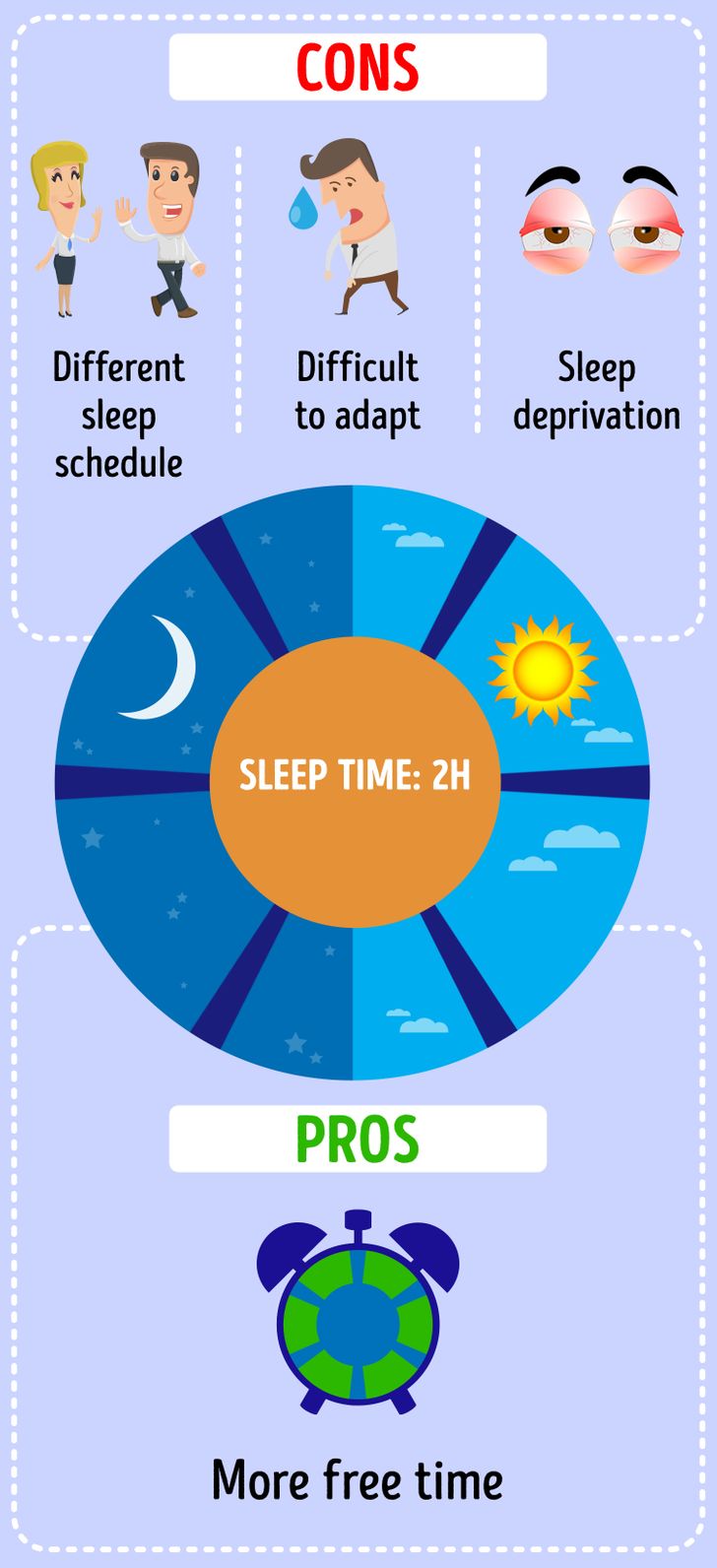
The Uberman cycle is a very extreme sleep schedule. It consists of 6 20-minute naps, with 3 hours and 40 minutes of wake periods in between. It’s very difficult to adapt to. Having a sleep cycle like this could be hard to maintain if you have a full-time job. It would also get in the way of socializing, since you’d need to keep up with your naps.
On the plus side, it creates a lot of free time for you. It might work better for people who naturally don`t require a lot of sleep. However, 2 hours of sleep per day is below the recommended sleep minimum.
3. Dymaxion cycle
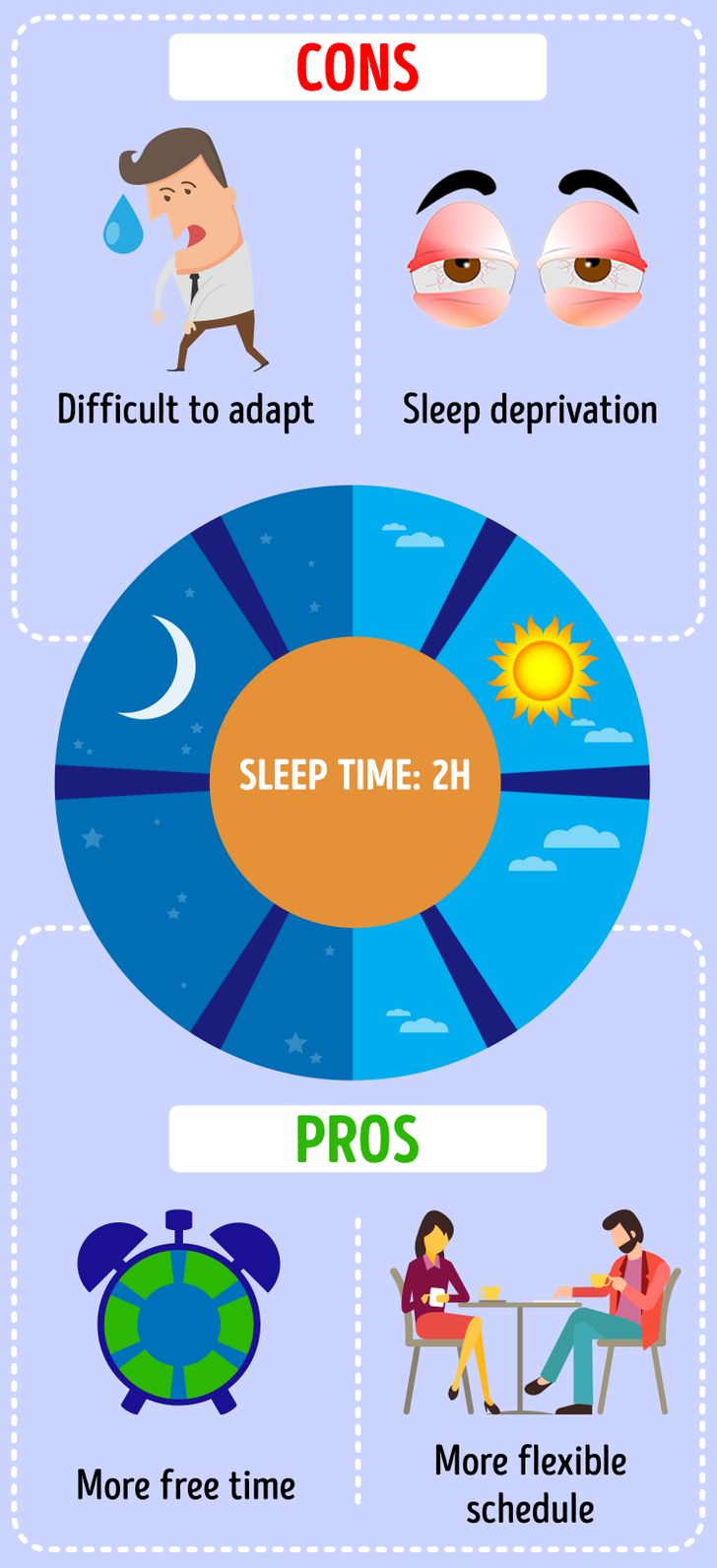
A Dymaxion sleep cycle looks similar to the Uberman sleep cycle. There are also only 2 hours of sleep, but they’re distributed between 4 30-minute naps, with 5 hours and 30 minutes of wake periods in between. Because the wake periods are longer, it allows for more flexibility in your schedule, whether it’s for your job or your social relationships.
4. Everyman cycle
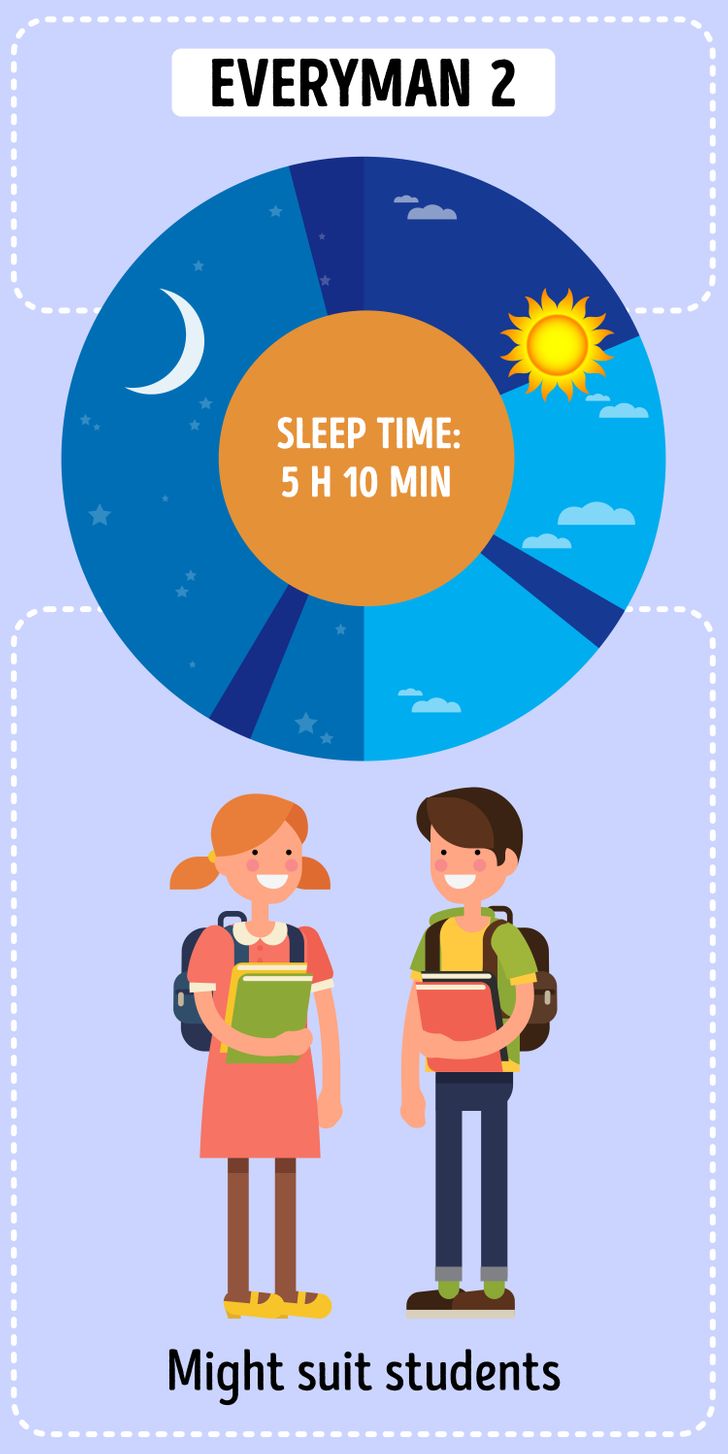
There are 5 versions of the Everyman cycle. The first one is identical to the biphasic sleep cycle, with 6 hours of sleep at night and a 20-minute nap during the day. The second one is to have 4.5 hours of sleep during the night, and 2 20-minute naps during the day. This cycle could work well for people who have part-time jobs and students, who have time to take a nap before, after, or between classes.

The third option would be to sleep for 3 hours, and then take 3 20-minute naps. In total, you would get 4 hours of sleep, which is the recommended minimum. The last 2 versions are even more extreme, with a 1.5-hour long nap and 4 20-minute naps, adding up to 2 hours and 50 minutes, and a 1.5-hour nap and 5 20-minute naps, giving you 3 hours and 10 minutes of sleep per day.
Though some of these schedules are easier to adjust to than others, they might all have negative effects on your health. Changing your sleep habits can cause hormonal imbalances and mood swings, it can negatively affect your appetite, and it might lead to caffeine addiction as you try to adjust to the new cycle.
Bonus: Try doing this to fall asleep faster!
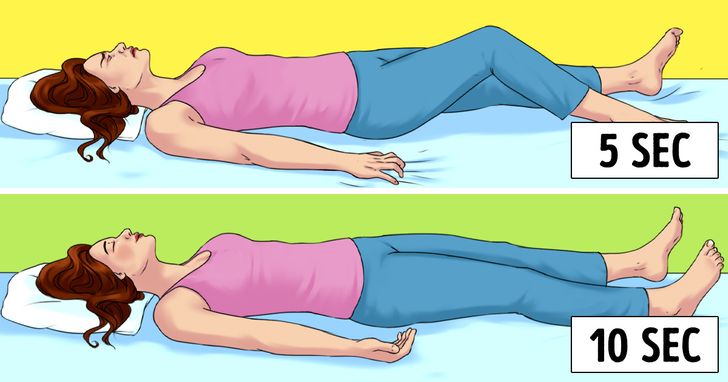
Try progressive muscle relaxation. When you do this exercise, you tense different groups of muscles in your body, one by one for a certain period of time, and then relax them. Start by squeezing the muscles in your forehead for 5-15 seconds, then relax them for 10-30 seconds.
Then repeat this technique with different muscle groups, clenching your jaw, then drawing your shoulders toward your ears and tensing the muscles, making fists with your hands and tensing your arms, and making similar movements with your buttocks, legs, and feet.
Have you ever tried any of these sleep schedules? Would you like to try them? Do you think they could benefit you and make your life more productive?
Comments
I actually wanna try a sleep schedule like this, I wonder how much good it will do for me
Related Reads
Zac Efron’s Appearance a Few Days Ago Leaves Fans Shocked and Worried

Miley Cyrus Causes a Stir by “Leaving Nothing to the Imagination” as She Wears an Extremely Revealing Dress

Model Lost Entire Lips in Pitbull Attack, And She Reflects on Her Recovering Journey

13 Riddles That Can Unleash the Secret Agent in You

Selena Gomez Was Body Shamed Following Her Latest Red Carpet Appearance, and Her Reaction Was Priceless

At 61, Meg Ryan Makes a Rare Public Appearance and Looks Unrecognizable

Tom Cruise Deemed Unrecognizable in New Pics With Prince William, as Some Say He Had “Too Much Surgery”

Jennifer Lopez Faces Backlash as Users Notice Something Unusual in Her Bikini Pics

15+ People Who Gave a New Chance to Old Items

Sharon Stone, 65, Shares a Stunning Bikini Photo, But One Twist Completely Stole Her Thunder

A Woman Used Botox Because She Wanted to Look Like Her Younger Self, and According to People Online She Succeeded

A Girl Born Without Nose, Who Was Called “Voldemort”, Proved Everyone Is Beautiful in Their Own Way
